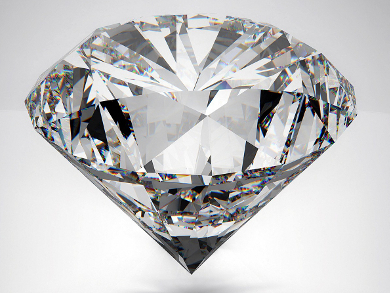Diamonds form deep within the earth under extreme heat and pressure. Previous explanations for diamond formation invoked complex redox reactions involving methane, carbon dioxide, magma, and other fluids, but they did not account for minerals dissolved in groundwater or fluid interactions with silicate rocks.
Dimitri Sverjensky and Fang Huang, Johns Hopkins University, Baltimore, MD, USA, have developed a new model that uses recent advances in theoretical and experimental aqueous geochemistry to simulate irreversible chemical mass transfers that occur when aqueous fluids interact with rocks. They calculated equilibrium constants involving minerals, aqueous ions, metal complexes, and organics at high temperatures and pressures. Under certain conditions, interactions between silicate minerals and water acidify the resulting solution, which could cause diamonds to precipitate.
Although the new model does not require redox reactions, they may occur in some environments. In fact, a combination of pH changes and redox reactions could set up multiple cycles of diamond precipitation and dissolution. This might explain fluid inclusions, daughter crystals, and other features observed in diamonds.
- Diamond formation due to a pH drop during fluid–rock interactions,
Dimitri A. Sverjensky, Fang Huang,
Nat. Commun. 2015, 6, 8702.
DOI: 10.1038/ncomms9702




